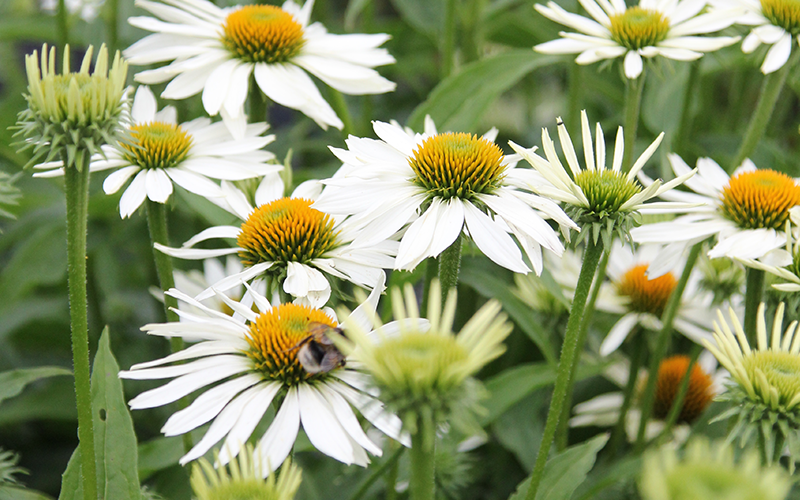
Sonnenhut (Echinacea purpurea) - Bunte Stauden für Sommerbeete und Wildgärten
Kaum eine andere Staude vereint natürliche Ausstrahlung und sommerliche Leuchtkraft so eindrucksvoll wie der Sonnenhut (Echinacea). Mit seinen markanten Blütenköpfen, den nach unten gebogenen Blütenblättern und der charakteristischen, leicht erhabenen Mitte setzt er strahlende Akzente in Beeten, ...
Continue reading
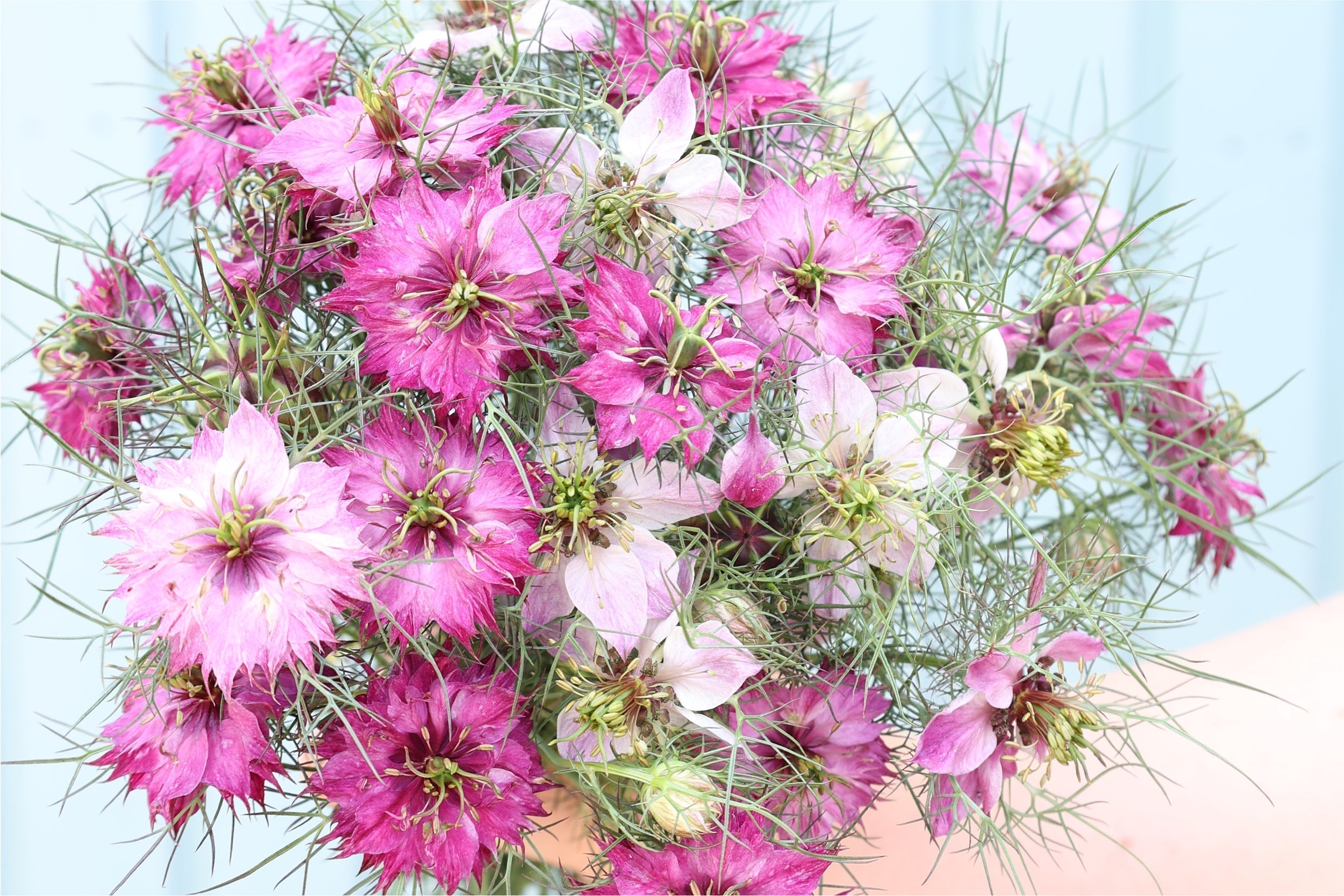
Jungfer im Grünen (Nigella damascena) – Zarte Schönheit mit verspieltem Charme
Zart, verspielt und doch von überraschender Ausdruckskraft – die Jungfer im Grünen gehört zu den Sommerblumen, die nie aus der Mode kommen. Mit ihren feinen, fadenartigen Blättern und den schwebenden Blüten wirkt sie, als hätte man ein Stück Himmel im Beet eingefangen. Nach der Blüte schmückt sie...
Continue reading
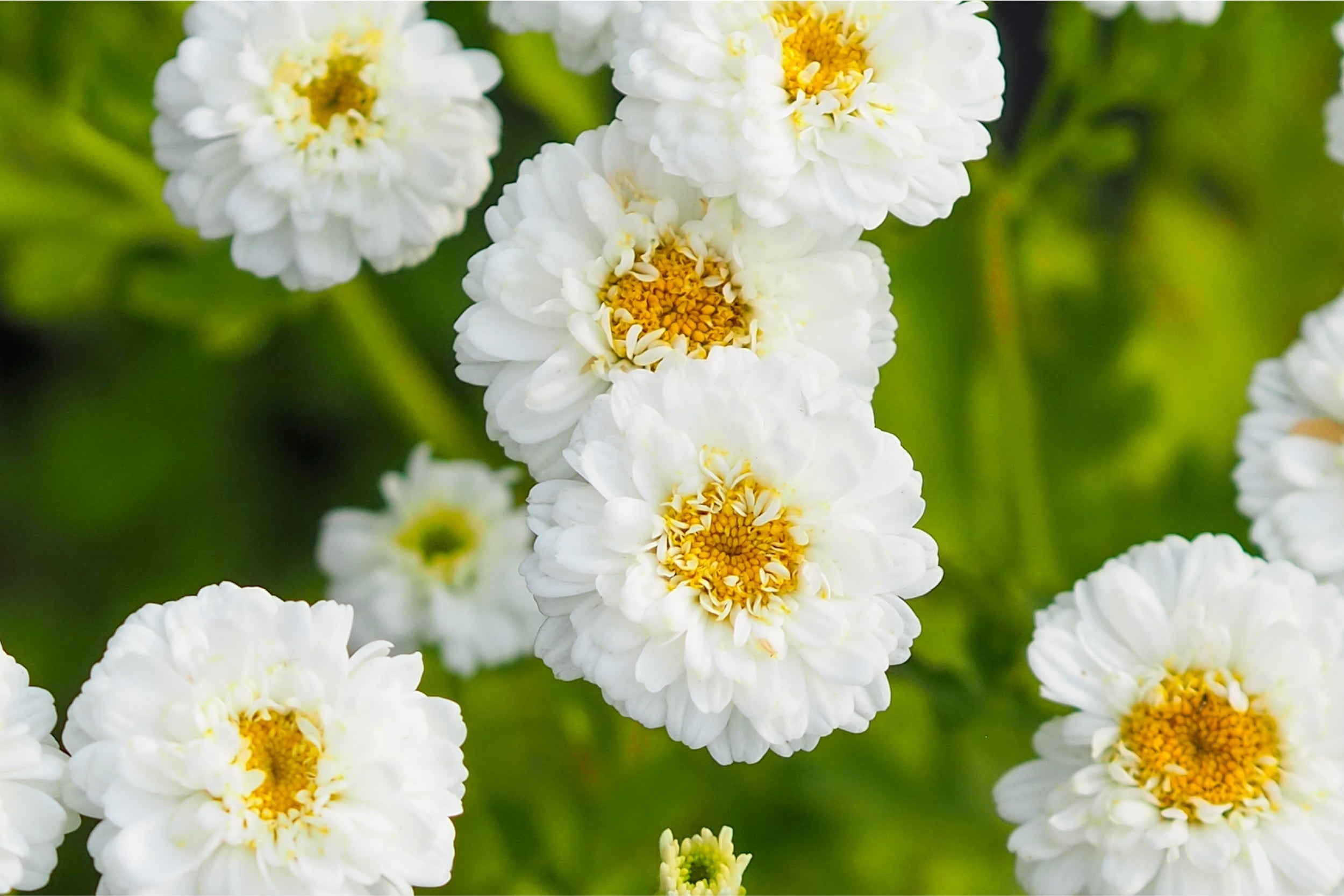
Mutterkraut (Chrysanthemum parthenium) – Zarte Blütenschirme mit nostalgischem Charme
Das Mutterkraut, botanisch Chrysanthemum parthenium , ist eine jener charmanten Pflanzen, die alten Bauerngärten ihren unverwechselbaren Charakter verleihen. Zierlich, leicht und doch von großer Ausstrahlung – es versprüht mit seinen schneeweißen Blüten einen Hauch ländlicher Nostalgie und fügt s...
Continue reading
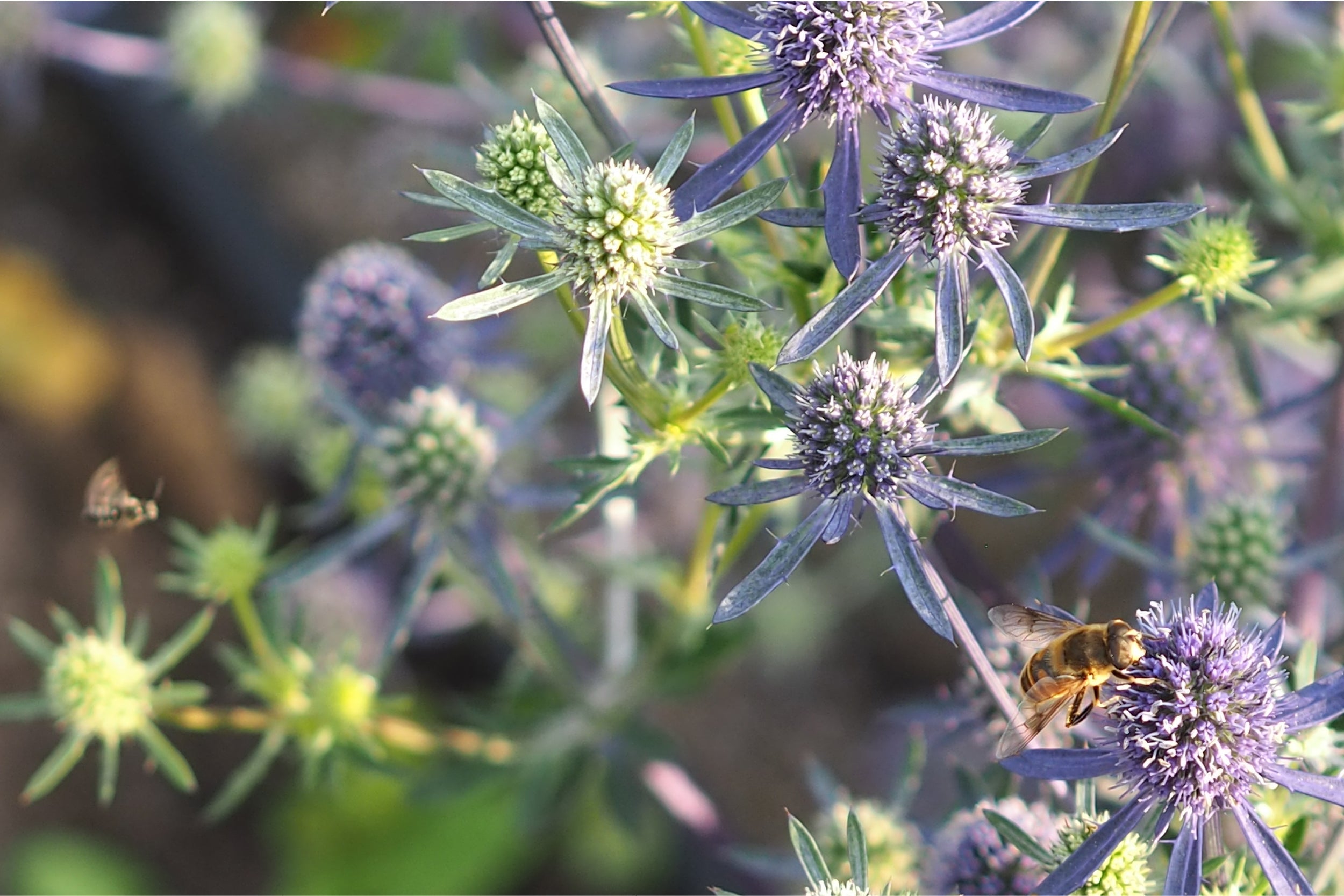
Edeldistel (Eryngium planum) – wehrhafte Staude mit blauer Eleganz
Kaum eine andere Staude vereint Wildheit und Eleganz so eindrucksvoll wie die Edeldistel (Eryngium planum). Mit ihren stahlblauen, metallisch glänzenden Blüten und dem markanten, starren Wuchs setzt sie leuchtende Akzente in Sommerbeeten. Sie bringt Struktur, Kontrast und eine Prise Wildromantik ...
Continue reading
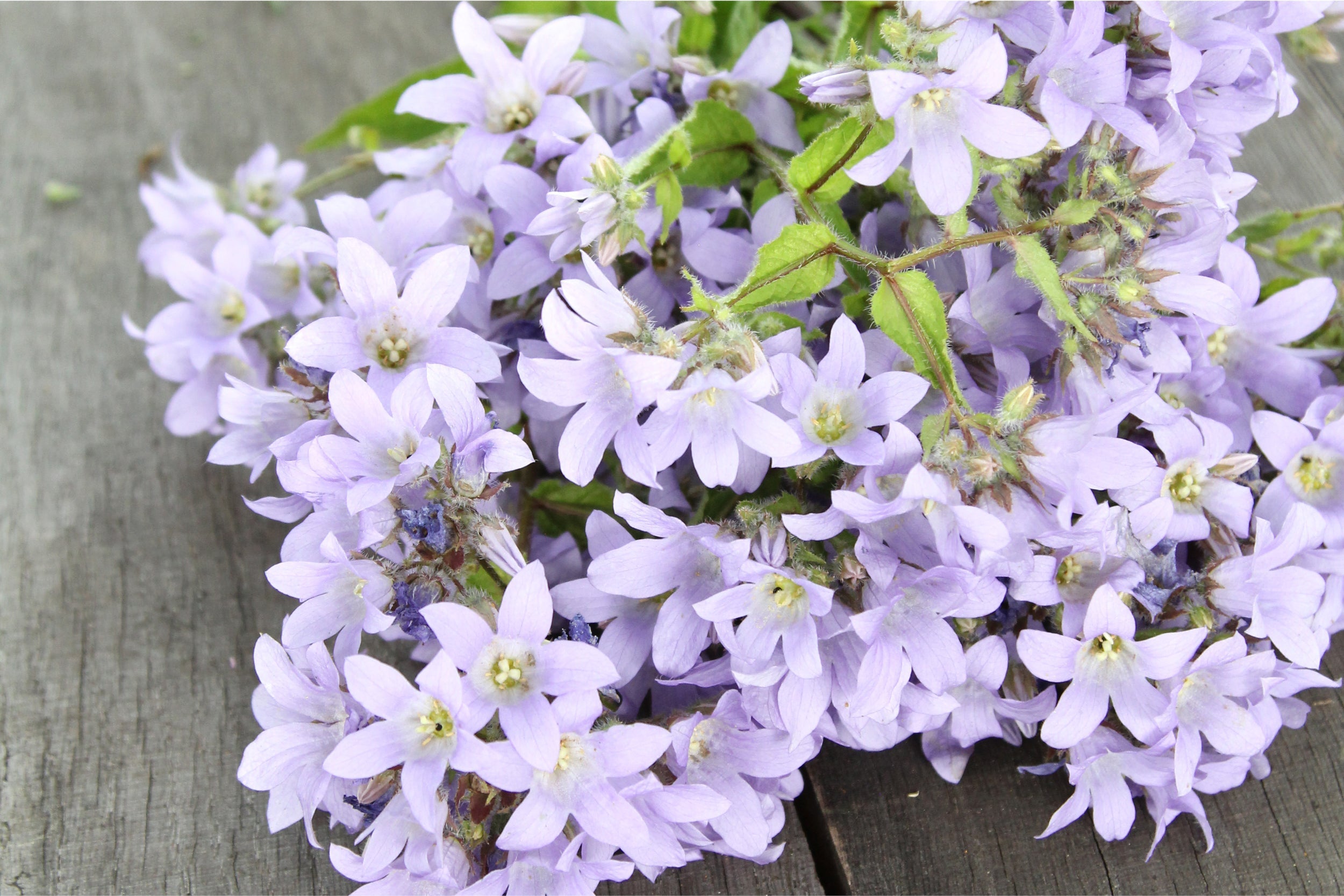
Doldenglockenblume (Campanula lactiflora) – Zarte Blütenwolken für den Sommergarten
Wer den Charme romantischer Staudenbeete liebt, wird an der Doldenglockenblume nicht vorbeikommen. Campanula lactiflora vereint aufrechte Eleganz mit natürlicher Leichtigkeit – und verwandelt sommerliche Beete in ein zartes Blütenmeer.
Continue reading
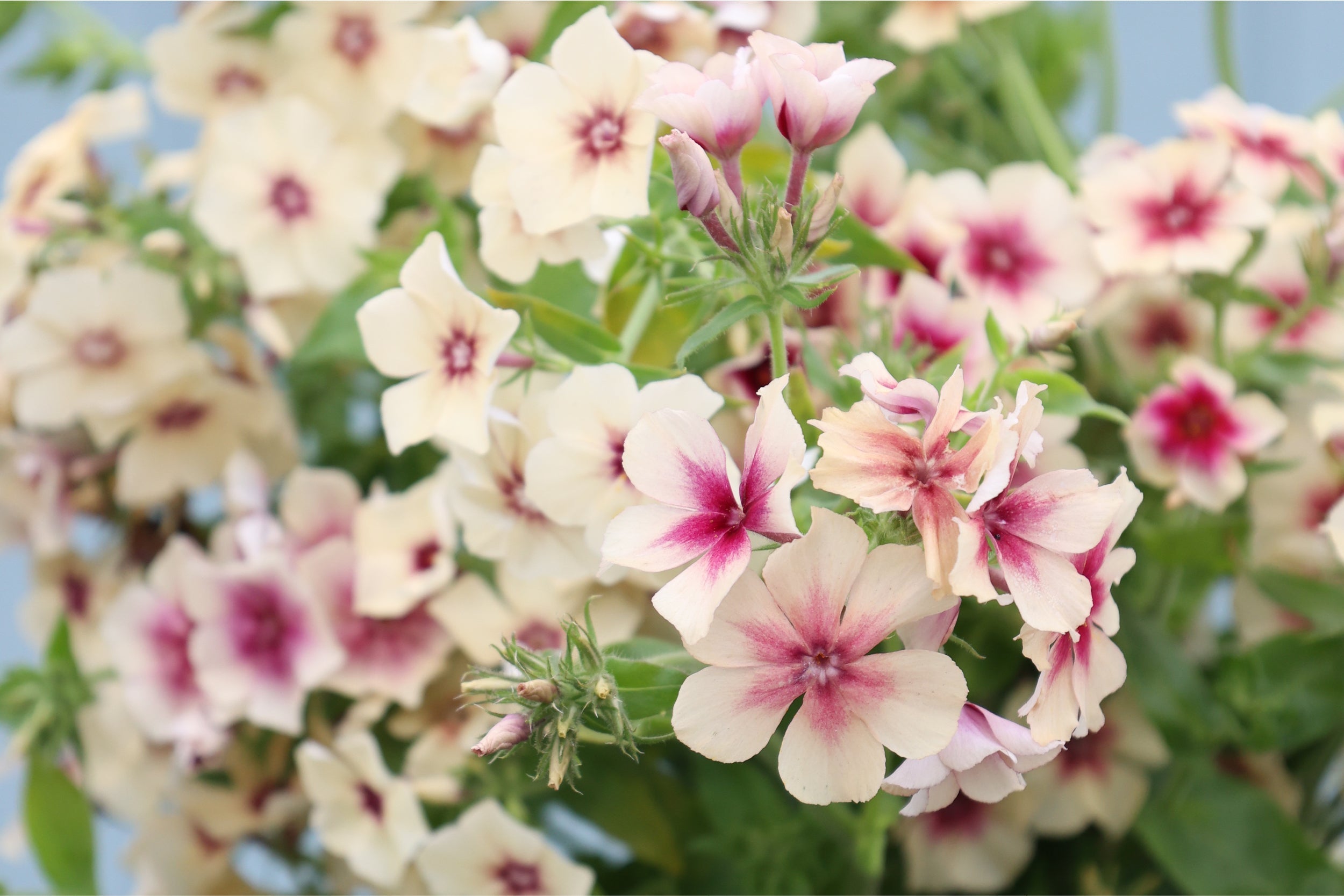
Sommerphlox (Phlox drummondii) – Leuchtende Sommerpracht mit nostalgischem Charme
Kaum eine einjährige Sommerblume schafft es, zugleich so verspielt und doch standhaft zu wirken wie der Sommerphlox (Phlox drummondii). Mit seinen duftenden, dichten Blütendolden gehört er zu jenen Pflanzen, die Gärten sofort eine lebendige, fast malerische Atmosphäre verleihen. Ursprünglich stam...
Continue reading
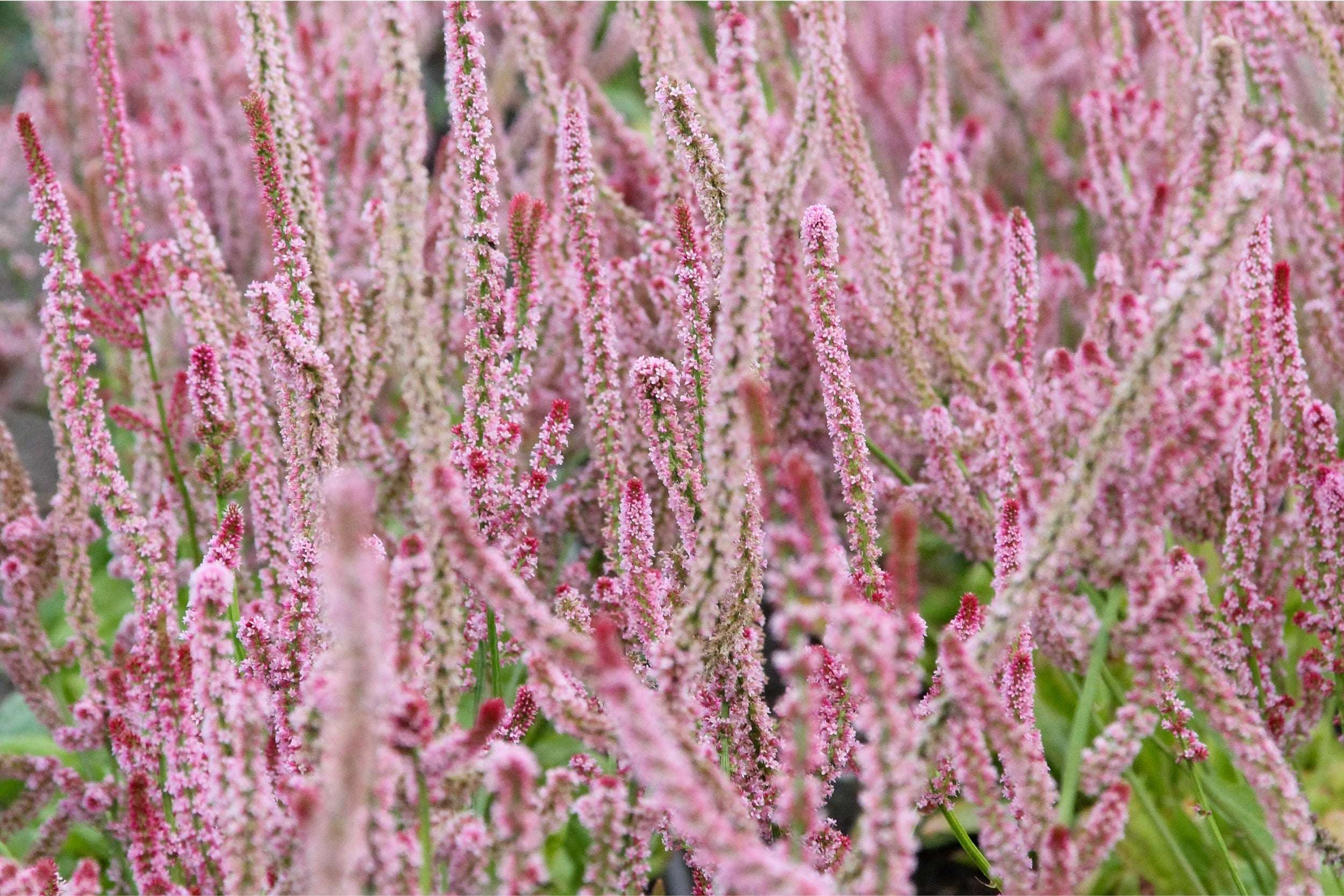
Meerlavendel (Limonium suworowii)– zarte Schönheit mit außergewöhnlicher Leuchtkraft
Der Meerlavendel (Limonium suworowii) ist eine faszinierende Sommerblume, die mit ihrer außergewöhnlichen Blütenform und ihrer zarten Eleganz jeden Garten und jedes Blumenarrangement bereichert. Mit ihren leuchtend pinkfarbenen, kerzenförmigen Blütenständen wirkt sie wie ein Hauch Exotik im Beet ...
Continue reading
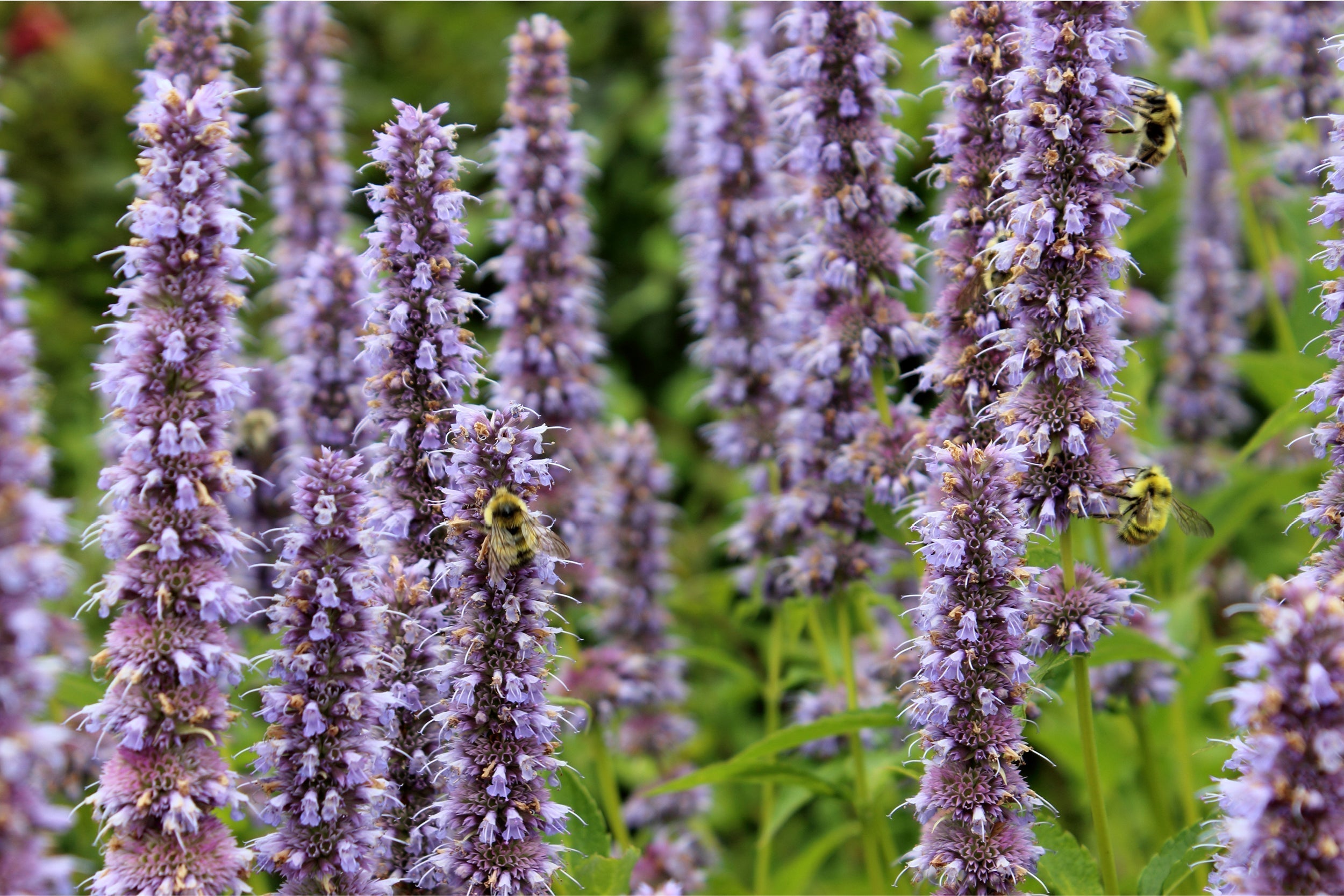
Anis-Duftnessel (Agastache foeniculum) – duftende Bienenpflanze für sonnige Beete
Die Anis-Duftnessel (Agastache foeniculum) ist eine jener Stauden, die gleichermaßen Herz und Sinne erfreuen. Mit ihrem intensiven Duft nach Anis und Minze, ihren leuchtenden Blütenkerzen und der unermüdlichen Anziehungskraft auf Bienen und Schmetterlinge ist sie eine wahre Bereicherung für jedes...
Continue reading
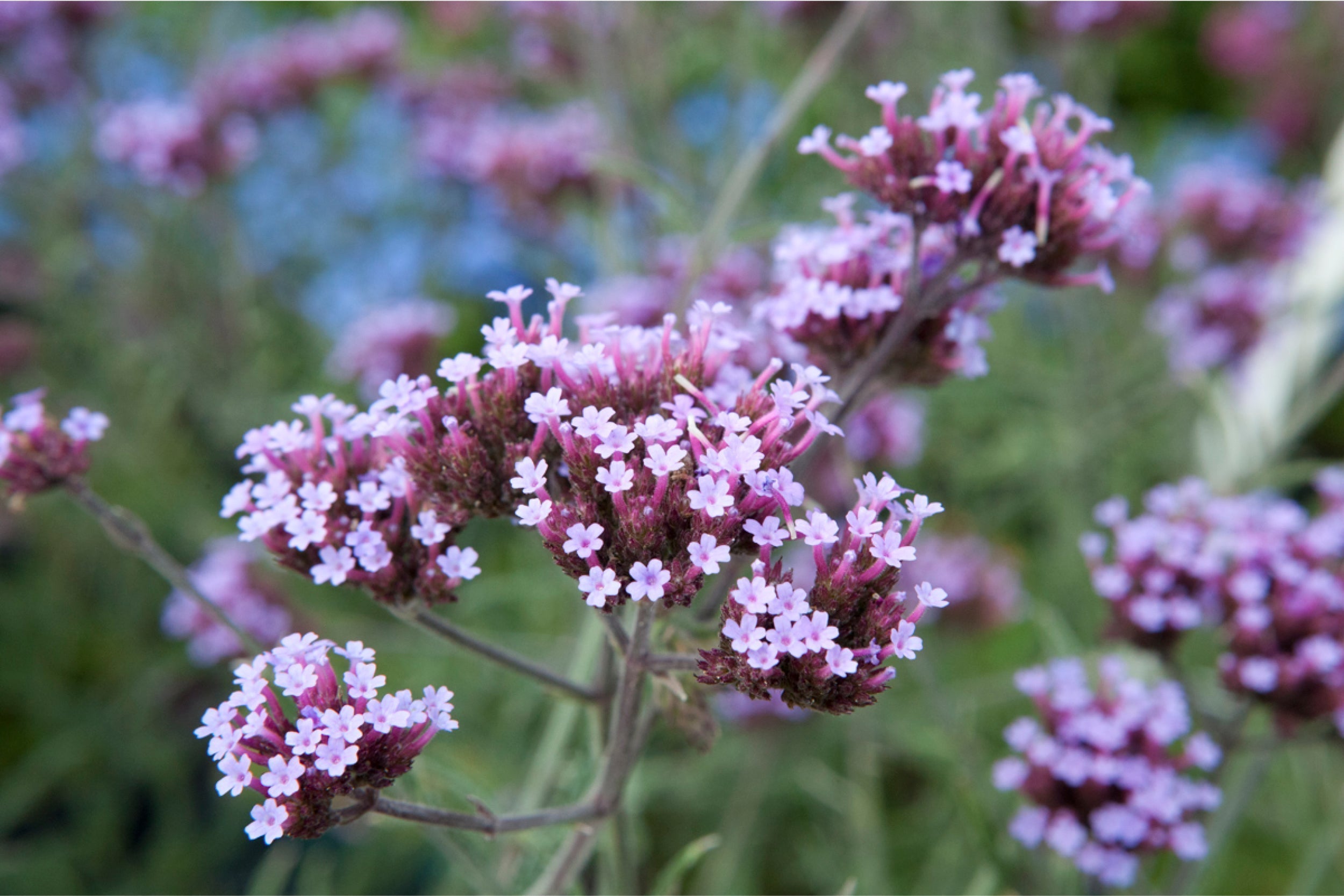
Hohes Eisenkraut (Verbena bonariensis) – Schwebende Leichtigkeit im Garten
Kaum eine andere Pflanze bringt so viel Anmut und Leichtigkeit in den Garten wie das Hohe Eisenkraut (Verbena bonariensis), auch bekannt als Patagonisches Eisenkraut. Mit seinen filigranen, verzweigten Stängeln und den zart violetten Blütendolden scheint es über den Beeten zu schweben – wie ein v...
Continue reading
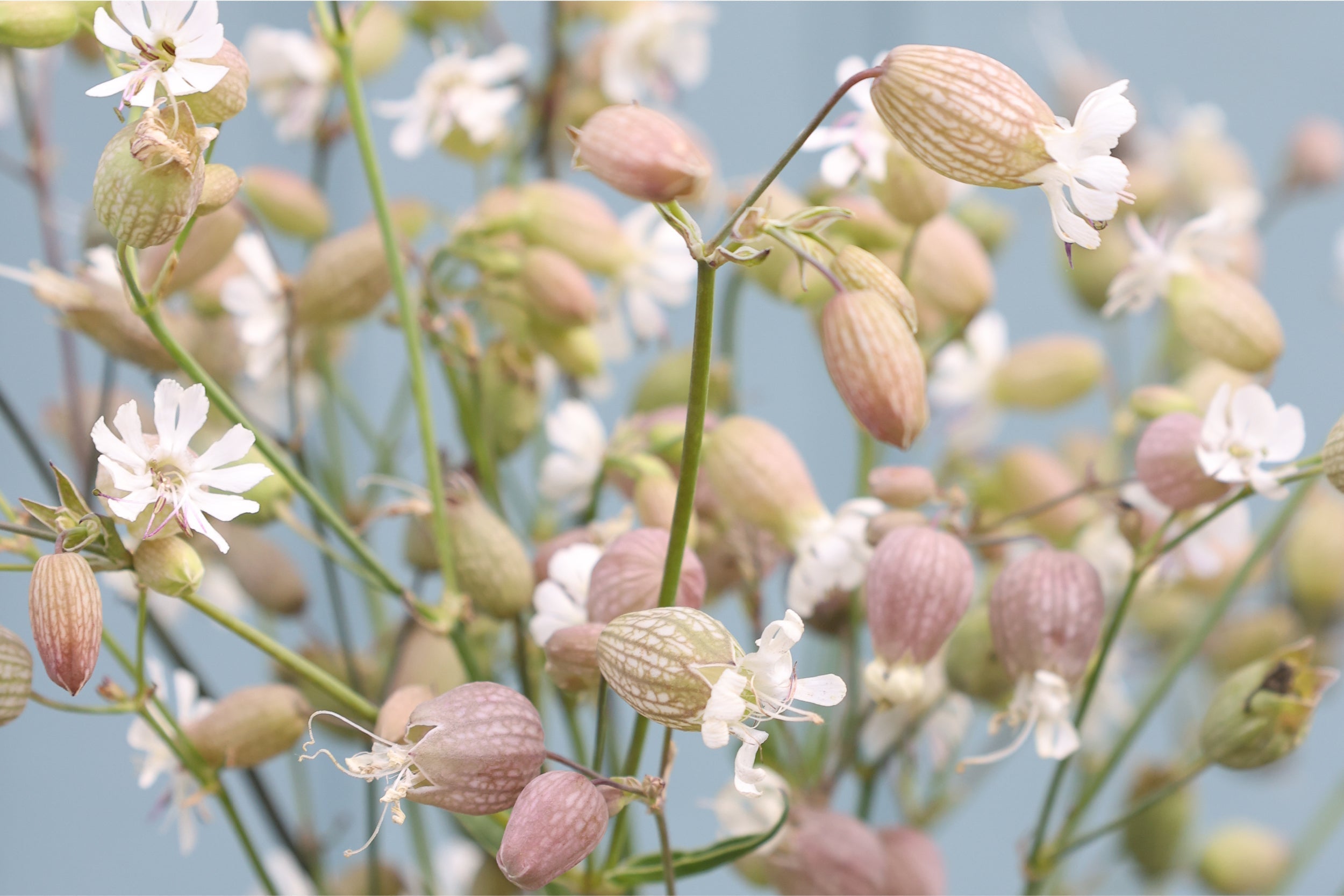
Taubenkropf-Leimkraut (Silene vulgaris) – Zarte Wildstaude für naturnahe Beete & Wiesen
Das Taubenkropf-Leimkraut (Silene vulgaris) gehört zu den heimischen Wildstauden, die in naturnahen Gärten zunehmend geschätzt werden. Seine filigranen, weißlich schimmernden Blüten mit den ballonartig aufgeblähten Kelchen verleihen Wiesen, Steingärten und naturnahen Beeten eine unverwechselbare ...
Continue reading

Schleierkraut (Gypsophila elegans) - Leichtigkeit für Garten & Vase
Das einjährige Schleierkraut (Gypsophila elegans) ist der Inbegriff von Leichtigkeit. Mit seinen feinen, weißen Blütenwolken bringt es Zartheit und Struktur in jedes Blumenbeet und ist zugleich ein unverzichtbarer Bestandteil natürlicher Sträuße. Ob als lockerer Füller zwischen kräftigeren Sommer...
Continue reading
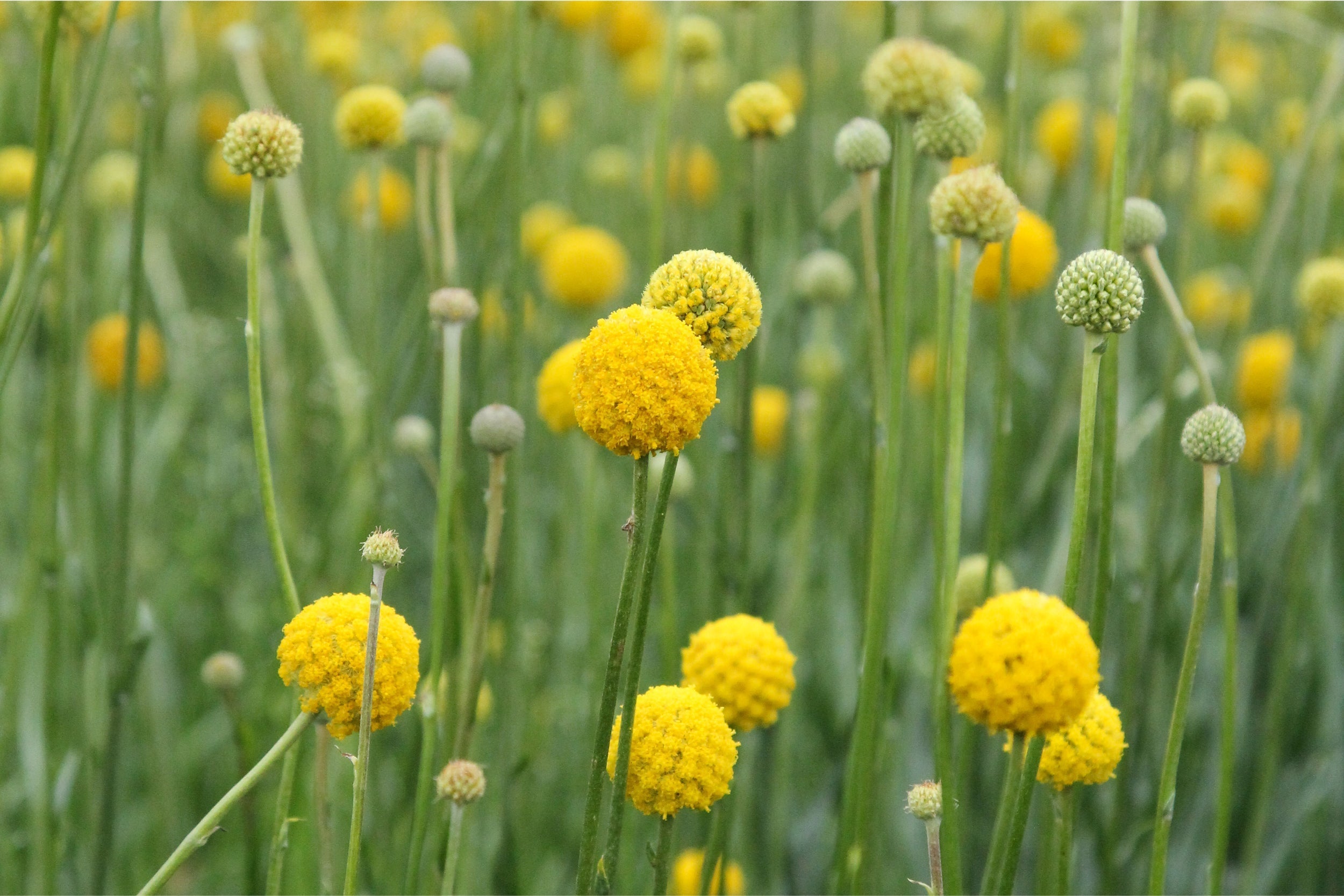
Trommelstöckchen (Craspedia globosa) – sonnige Schnittblume mit Charme
Das Trommelstöckchen, botanisch Craspedia globosa, gehört zu den fröhlichsten Sommerblumen überhaupt. Mit ihren kugelrunden, sonnengelben Blüten wirkt sie wie ein kleiner Sonnenstrahl im Beet oder in der Vase. Ursprünglich stammt sie aus Australien und Neuseeland, wo sie in offenen, trockenen Gra...
Continue reading
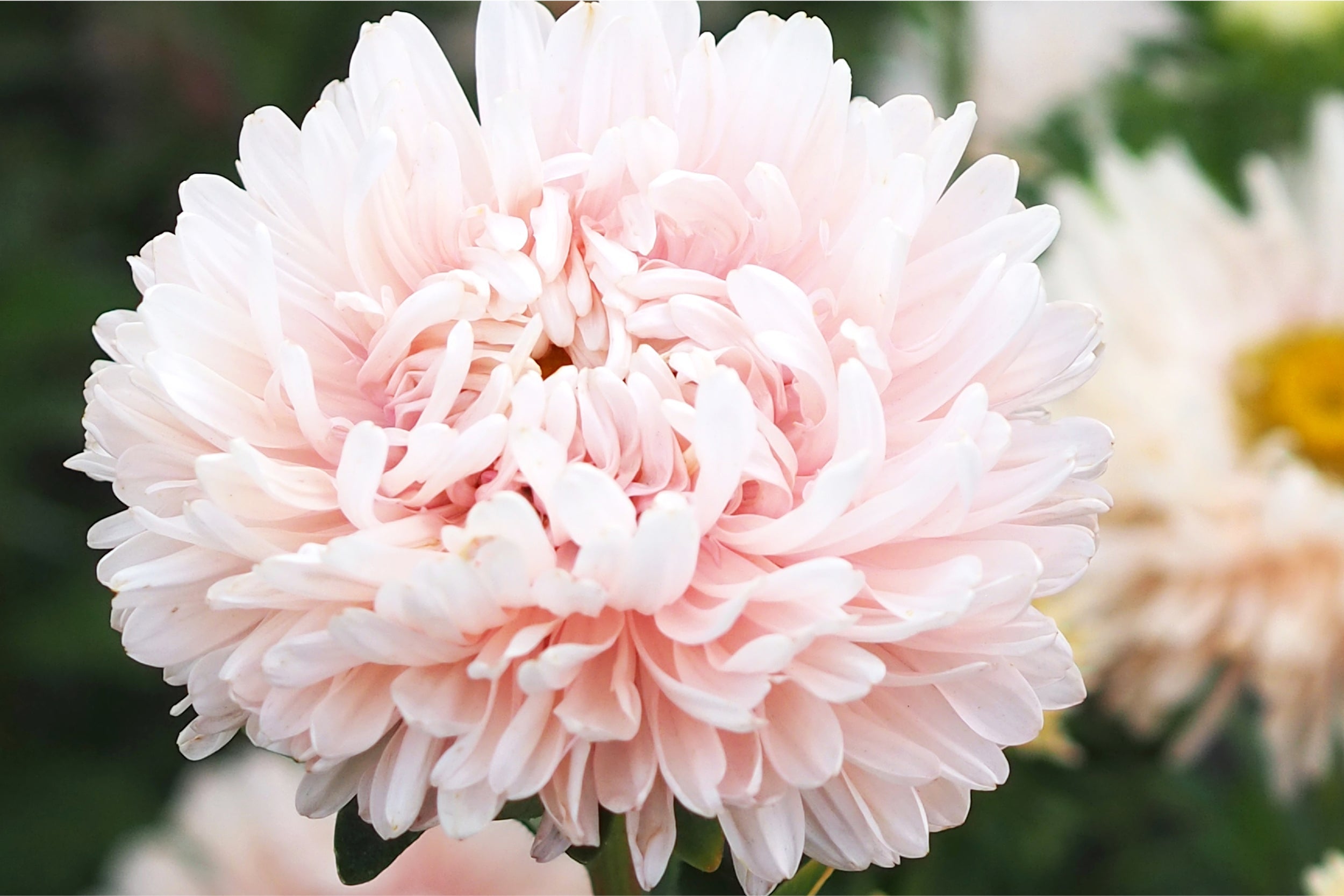
Sommeraster(Callistephus chinensis) – Farbenpracht und klassische Eleganz im Spätsommergarten
Die Sommeraster (Callistephus chinensis) gehört zu den schönsten und vielseitigsten Sommerblumen überhaupt. Ihre perfekt geformten, großen Blütenköpfe erscheinen in unzähligen Farbtönen – von Cremeweiß und Apricot über Zartrosa und Lavendel bis hin zu kräftigem Pink. Im Garten bringt sie Farbe un...
Continue reading
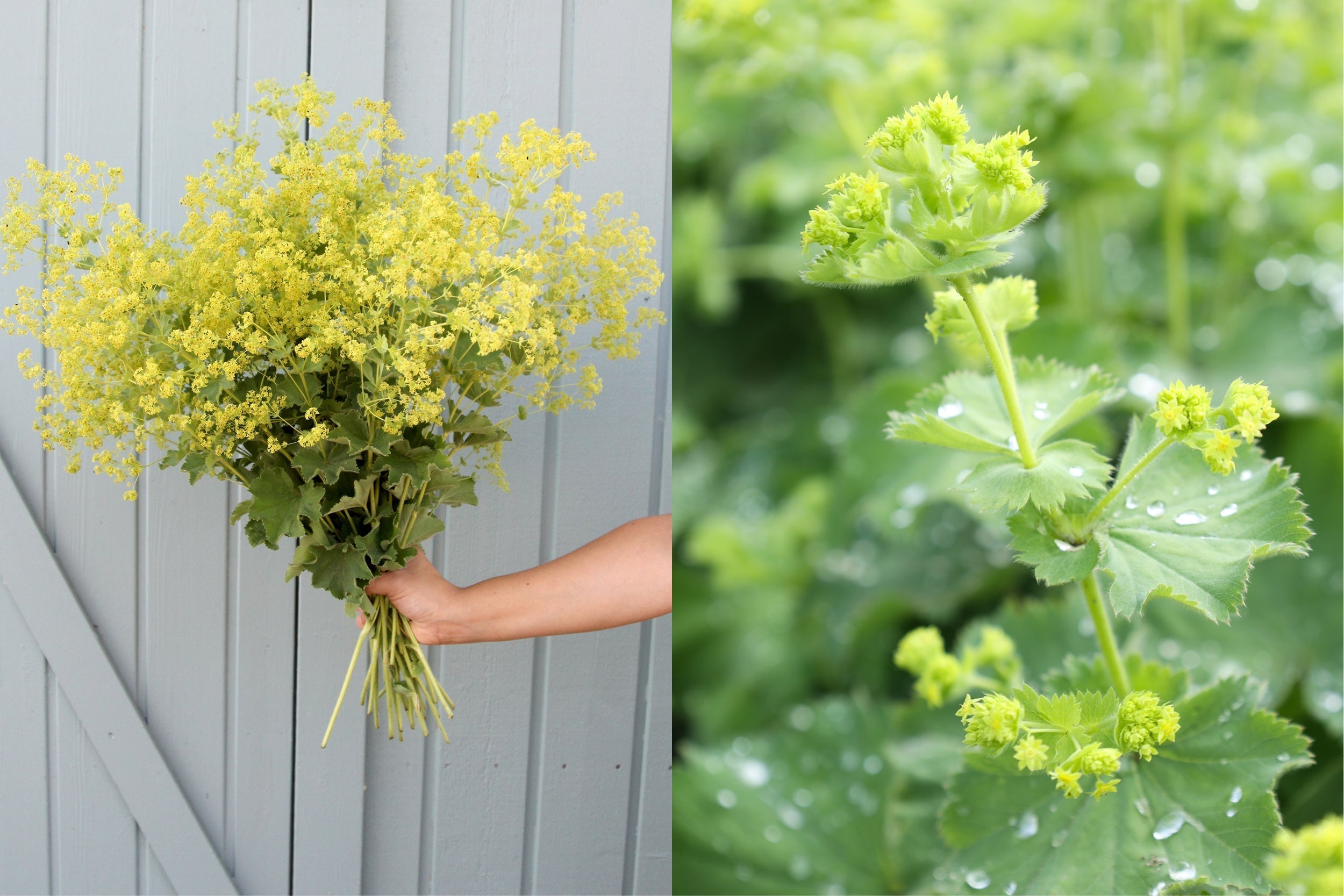
Frauenmantel (Alchemilla mollis) - Zarter Charme mit seidigem Schimmer
Kaum eine Staude ist so vielseitig, genügsam und dabei so anmutig wie der Frauenmantel (Alchemilla mollis). Mit seinen weichen, samtig behaarten Blättern und den zarten, limonengelben Blütenwolken gehört er zu den Klassikern im Staudenbeet. Besonders morgens, wenn sich Tautropfen oder Regentropfe...
Continue reading
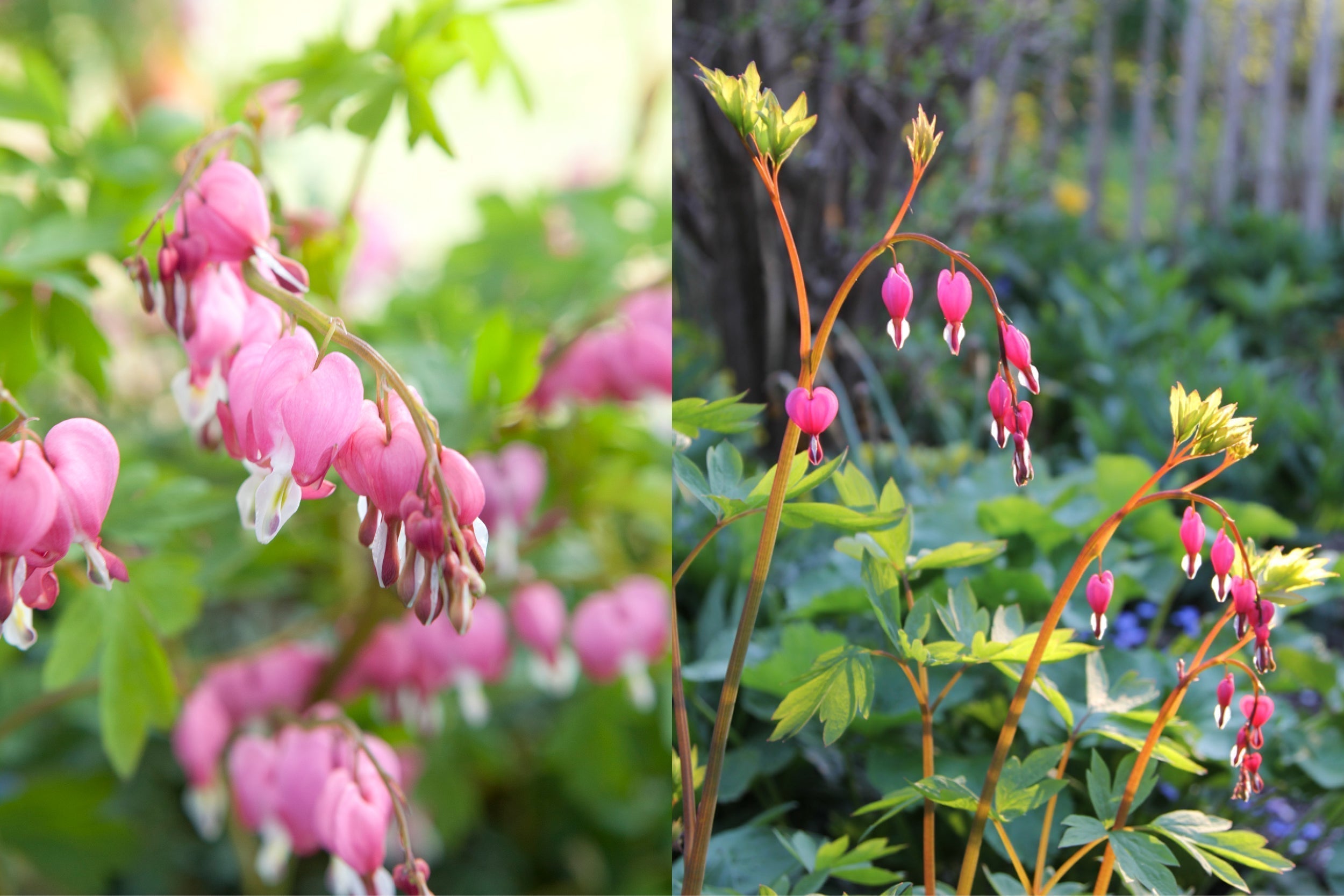
Tränendes Herz (Dicentra spectabilis) – Romantische Gartenstaude mit anmutigen Blüten
Das Tränende Herz (Dicentra spectabilis) gehört zu den schönsten und zugleich nostalgischsten Frühjahrsstauden im Garten. Mit seinen filigranen Blättern und den elegant überhängenden Blütentrauben, deren herzförmige Blüten zart nach unten tropfen, verzaubert es jeden schattigen Gartenbereich. Ka...
Continue reading

Katzenminze (Nepeta × faassenii) – Duftende Blütenwolke für Beete, Wege und Insekten
Die Blaue Katzenminze (Nepeta × faassenii) zählt zu den zuverlässigsten und schönsten Dauerblühern im Staudenbeet. Mit ihrem silbrig-grünen Laub und den unzähligen, zartviolett-blauen Blütenähren verleiht sie jedem Garten Leichtigkeit und eine sanft duftende, sommerliche Atmosphäre. Sie ist einer...
Continue reading
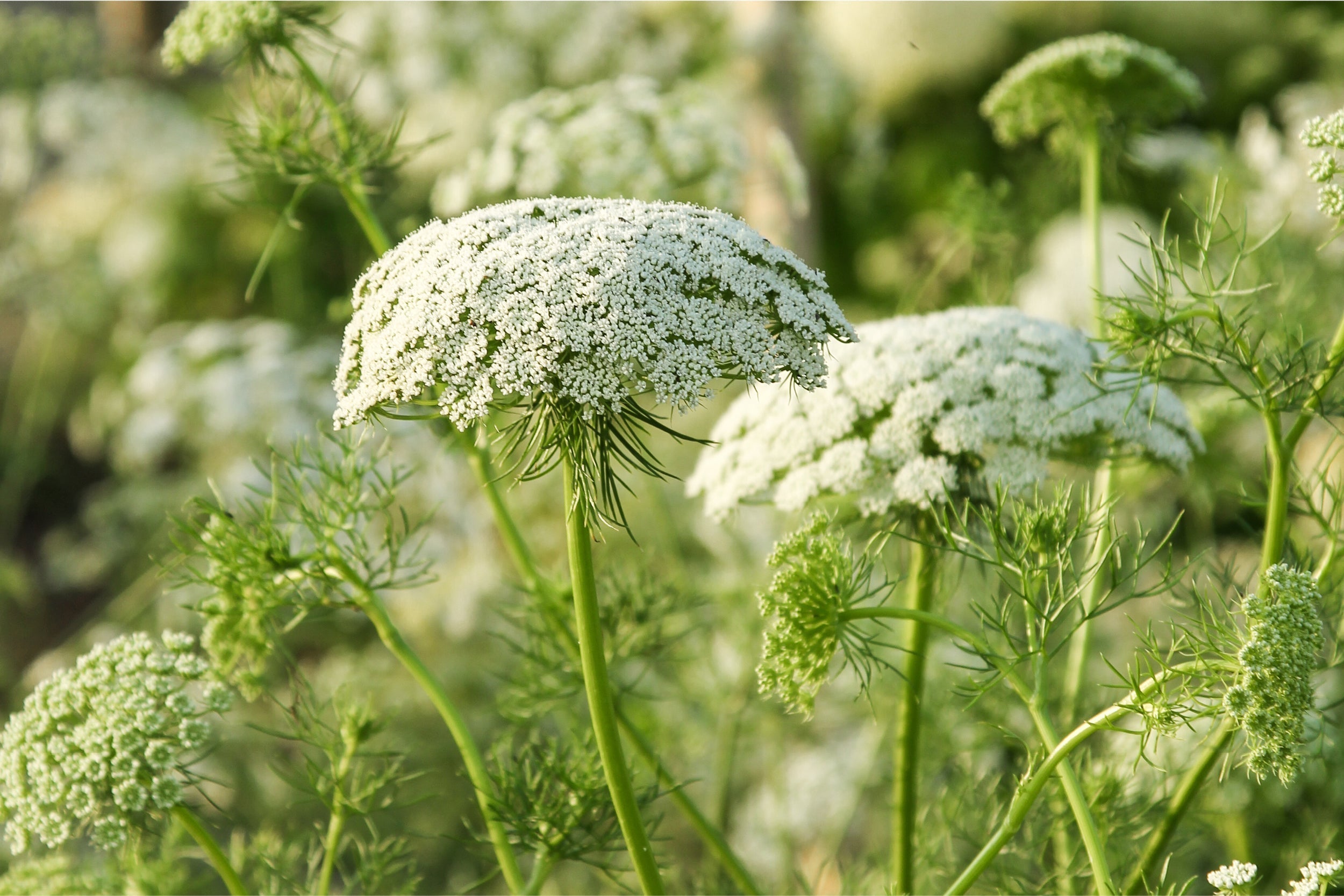
Bischofskraut (Ammi visnaga) – Feine Dolden für Garten und Strauß
Das Bischofskraut (Ammi visnaga) ist eine der anmutigsten Sommerblumen für naturnahe Gärten und Schnittbeete. Mit seinen zarten, weißen Blütendolden und dem fein gefiederten Laub bringt es Leichtigkeit und Struktur in jedes Beet. Kaum eine andere Pflanze verbindet so harmonisch Eleganz, Natürlich...
Continue reading
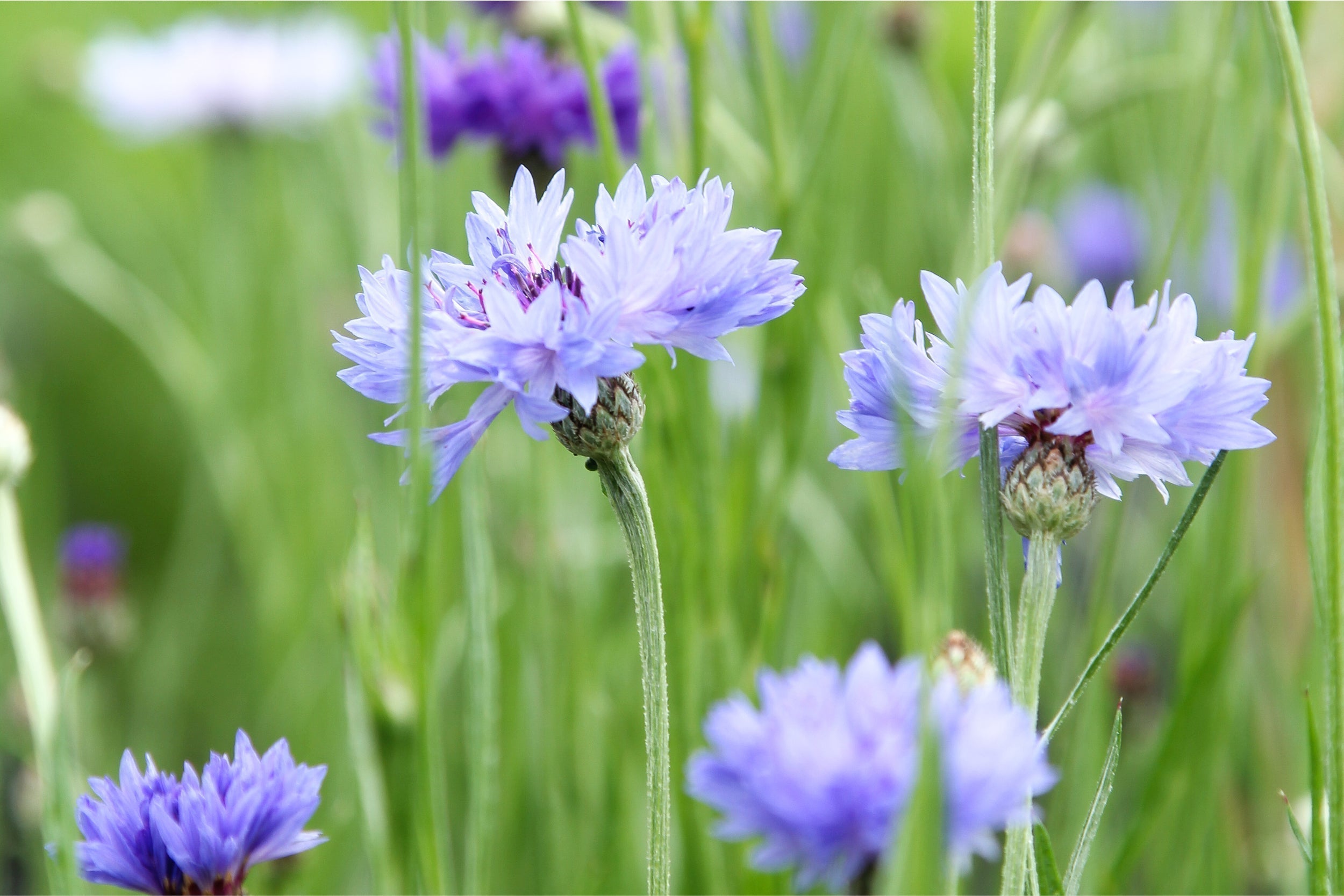
Kornblumen (Centaurea cyanus) – Sommerklassiker für Beete, Wiesen und Sträuße
Die Kornblume (Centaurea cyanus) ist eine der charmantesten Sommerblumen Europas – ein Sinnbild für ländliche Romantik und natürliche Gartenfreude. Ursprünglich war sie ein typischer Begleiter der Getreidefelder und leuchtete in kräftigem Himmelblau zwischen den goldenen Ähren. Heute ist sie wied...
Continue reading
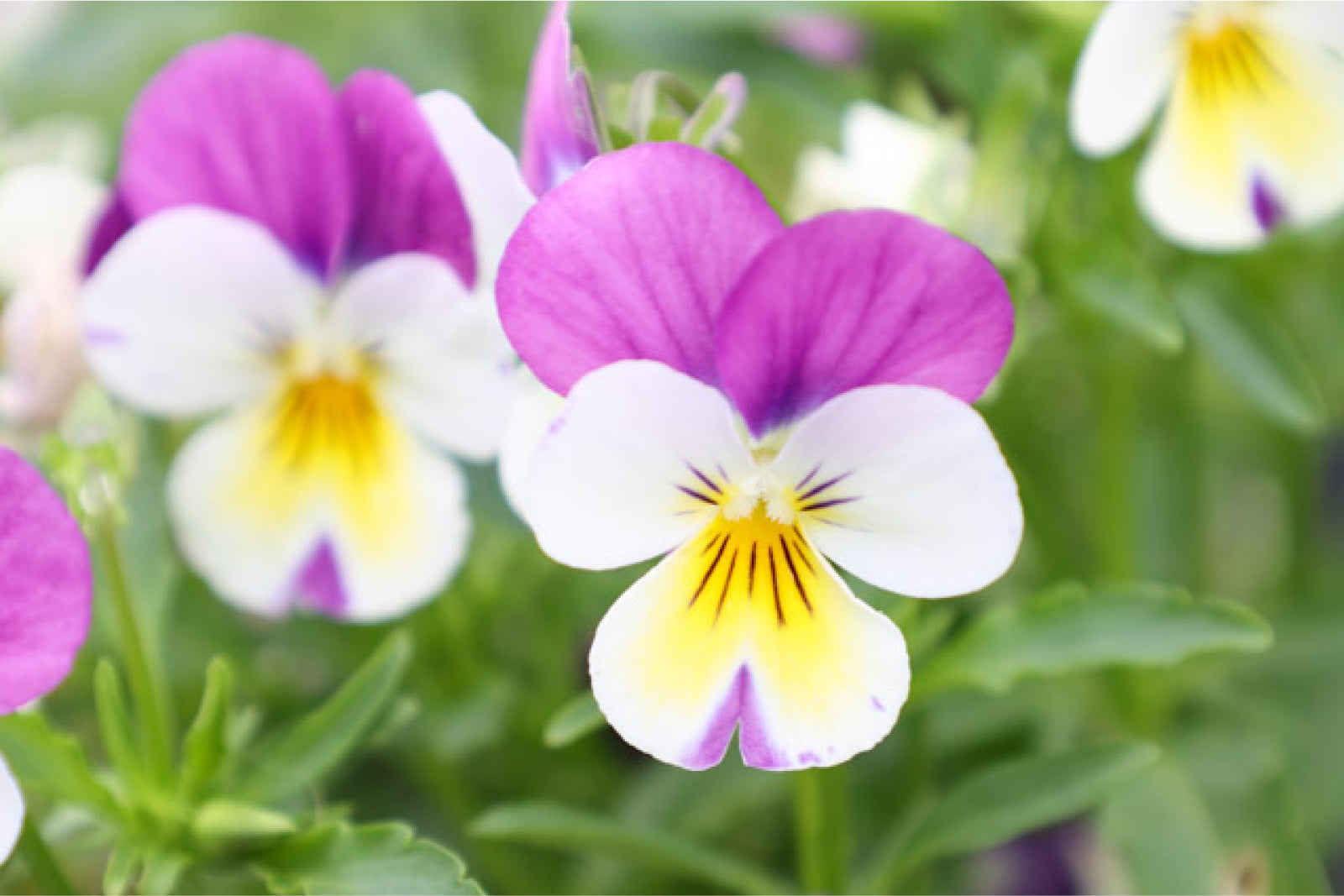
Hornveilchen – kleine Blüten, große Wirkung
Zart, fröhlich und unermüdlich – Hornveilchen sind die feinsinnigen Schwestern der Stiefmütterchen. Sie blühen früher, länger und wirken dabei so natürlich, als hätten sie sich von selbst ins Beet geschmuggelt. Ihre anmutige Leichtigkeit macht sie zu idealen Frühlingsboten – ob im Beet, Topf oder...
Continue reading
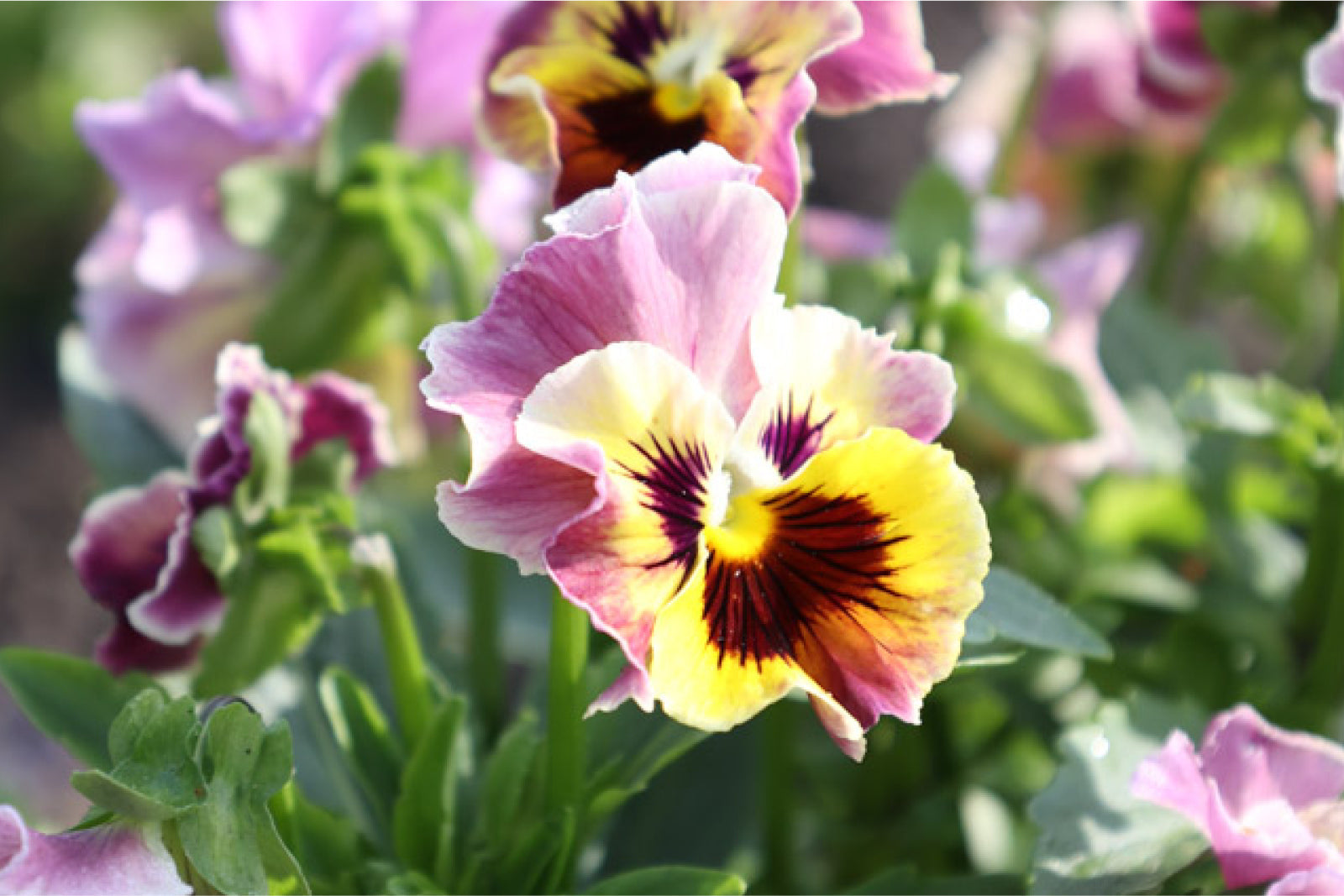
Stiefmütterchen Frizzle Sizzle – Frühlingslaune mit Rüschenrand
Wenn der Winter sich endlich zurückzieht, sind sie die ersten, die wieder Farbe in Garten, Topf und Schale bringen: Stiefmütterchen. Und mit der Serie ‘Frizzle Sizzle’ zeigen sie sich von ihrer extravagantesten Seite – mit gewellten Blütenrändern, leuchtenden Farben und einer Fröhlichkeit, die so...
Continue reading
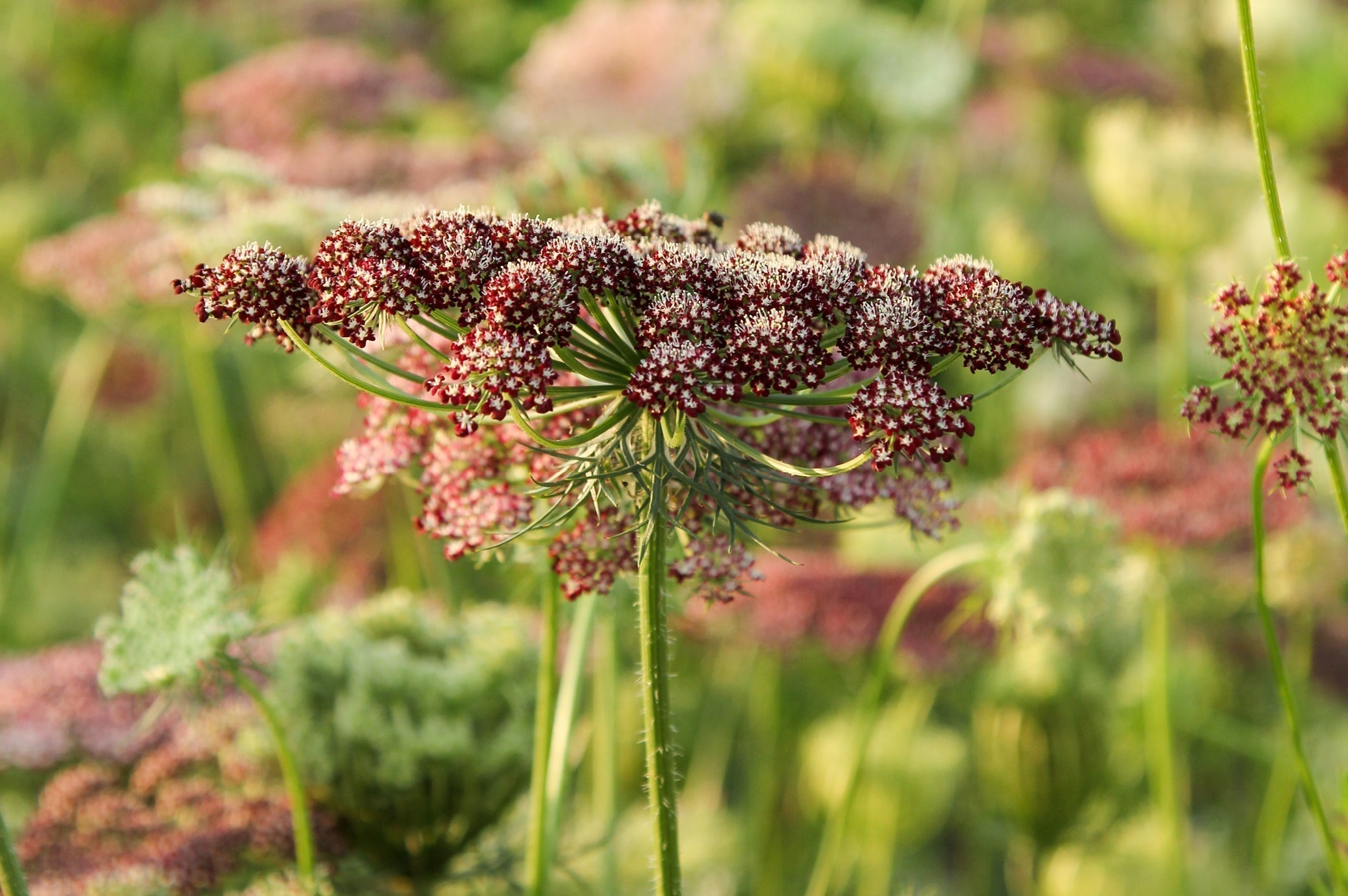
Wilde Möhre (Daucus carota) ‘Dara’ – kultivierte Wildschönheit für Garten und Vase
Die Wilde Möhre (Daucus carota) ist in freier Natur häufig zu finden – doch ihre Zuchtsorte ‘Dara’ zeigt, wie aus einer Wildpflanze ein echter Gartenstar wird. Ihre filigranen Blütendolden leuchten in feinen Tönen zwischen Rosé, Purpur und tiefem Bordeaux. Diese zarte Farbpalette macht sie zur id...
Continue reading
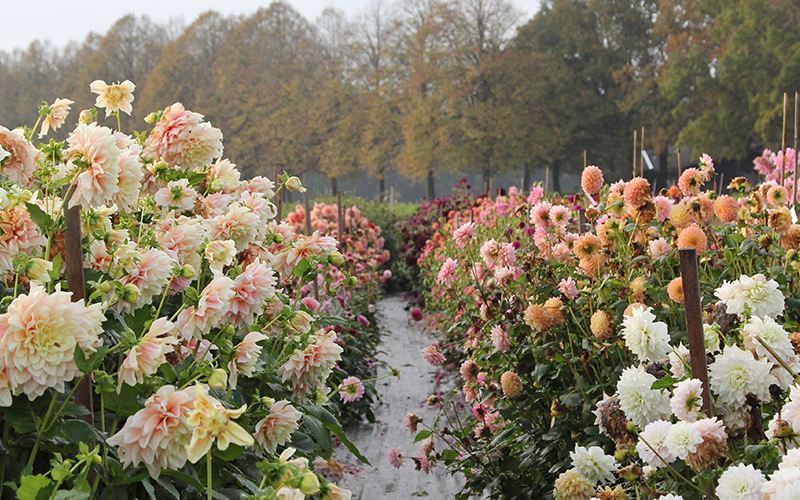
Dahlien ausgraben und lagern – Wann der richtige Zeitpunkt gekommen ist
Auf unserer Blumenfarm ist der Herbst der Moment, in dem alles etwas leiser wird. Die Beete, eben noch voller Farbe, wirken plötzlich still – und doch geschieht unter der Erde noch einiges. Viele Gärtner fragen sich dann: Wann ist der richtige Zeitpunkt, um die Knollen auszugraben?
Die alte Faust...
Continue reading

Chinesisches Vergissmeinnicht (Cynoglossum amabile) – Zarte Farben und Leichtigkeit im Sommergarten
Das Chinesische Vergissmeinnicht (Cynoglossum amabile) ist eine der charmantesten Sommerblumen überhaupt – fein, unaufdringlich und doch mit einer besonderen Leuchtkraft. Mit seinen glockenförmigen Blüten in rauchigem Rosa, Himmelblau oder leuchtendem Indigoblau bringt es frische Farbtupfer in Be...
Continue reading
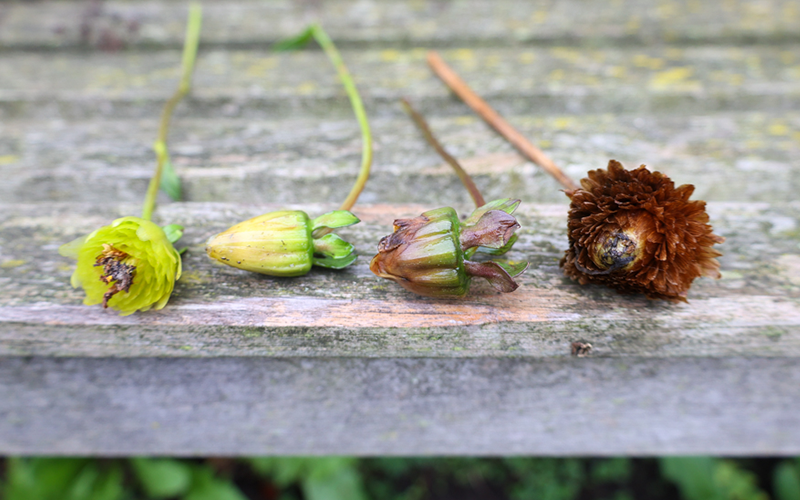
Dahliensamen sammeln – unsere Tipps für perfektes Saatgut aus eigenem Anbau
Dahlien aus Samen zu ziehen ist für uns jedes Jahr ein ganz besonderes Erlebnis. Es eröffnet eine Welt voller neuer Farben, Formen und Überraschungen. Auf unserer Blumenfarm ist das Saatfeld einer unserer Lieblingsorte – besonders im Hochsommer, wenn die ersten Blüten neuer Kreuzungen aufgehen. D...
Continue reading
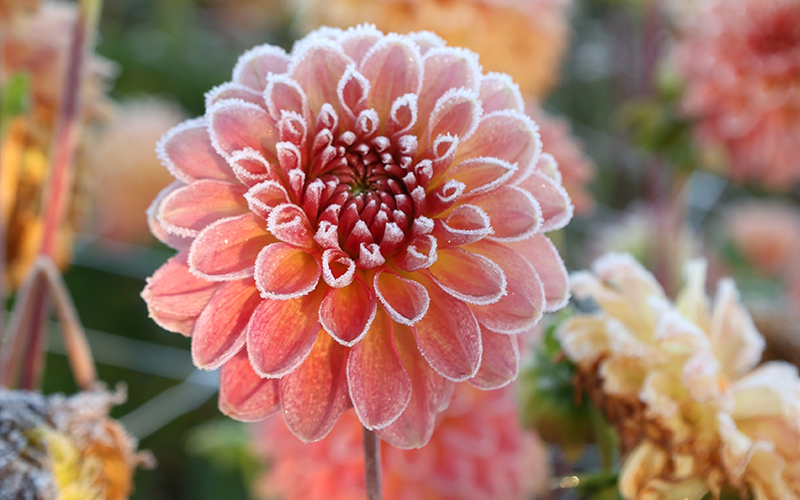
Storing dahlias correctly
Since dahlias originate from sun-drenched Mexico, the tubers are very sensitive to frost and should be stored during the winter. They can only survive outdoors in extremely mild winters in very sheltered locations. If they are exposed to frost, they will not survive the winter. Mid-November is u...
Continue reading
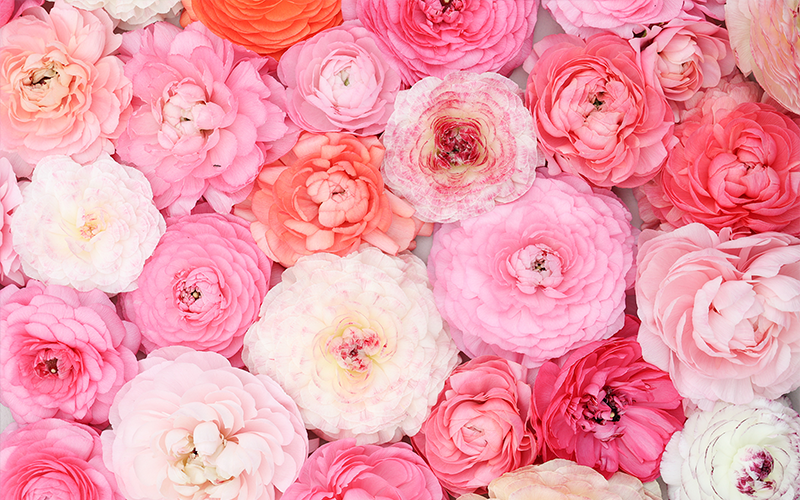
Ranunkeln pflanzen & pflegen – Tipps für Beet, Topf & Vase
Bunte Blütenpracht, gefüllt wie Pfingstrosen oder zart wie Rosen: Ranunkeln bringen Frühlingszauber ins Beet, in den Topf und in die Vase – und das wochenlang. Wer schon jetzt vom Blütenmeer träumt, findet in unserem Online Shop eine schöne Auswahl an Ranunkel Knollen. Ranunkeln lassen sich ganz ...
Continue reading
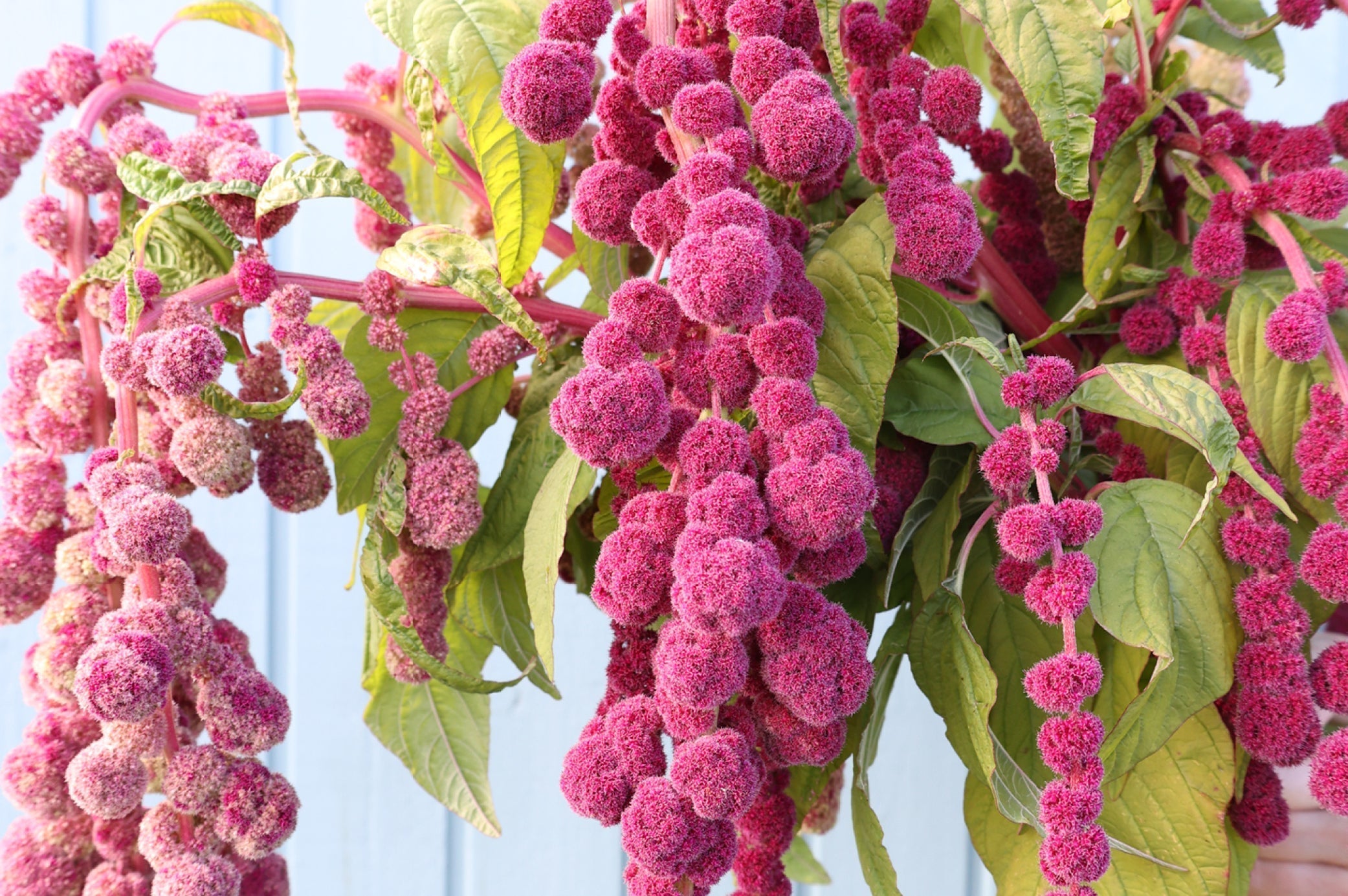
Amaranth im Garten – So pflegst und nutzt du die vielseitige Prachtpflanze
Amaranth, auch bekannt als Fuchsschwanz oder „Königskorn der Inkas“, ist eine faszinierende Bereicherung für jeden Garten oder Balkon. Die imposanten Blütenrispen in Rot, Purpur oder Bronze machen ihn zu einem echten Blickfang – und das nicht nur optisch. Die alte Kulturpflanze beeindruckt mit un...
Continue reading
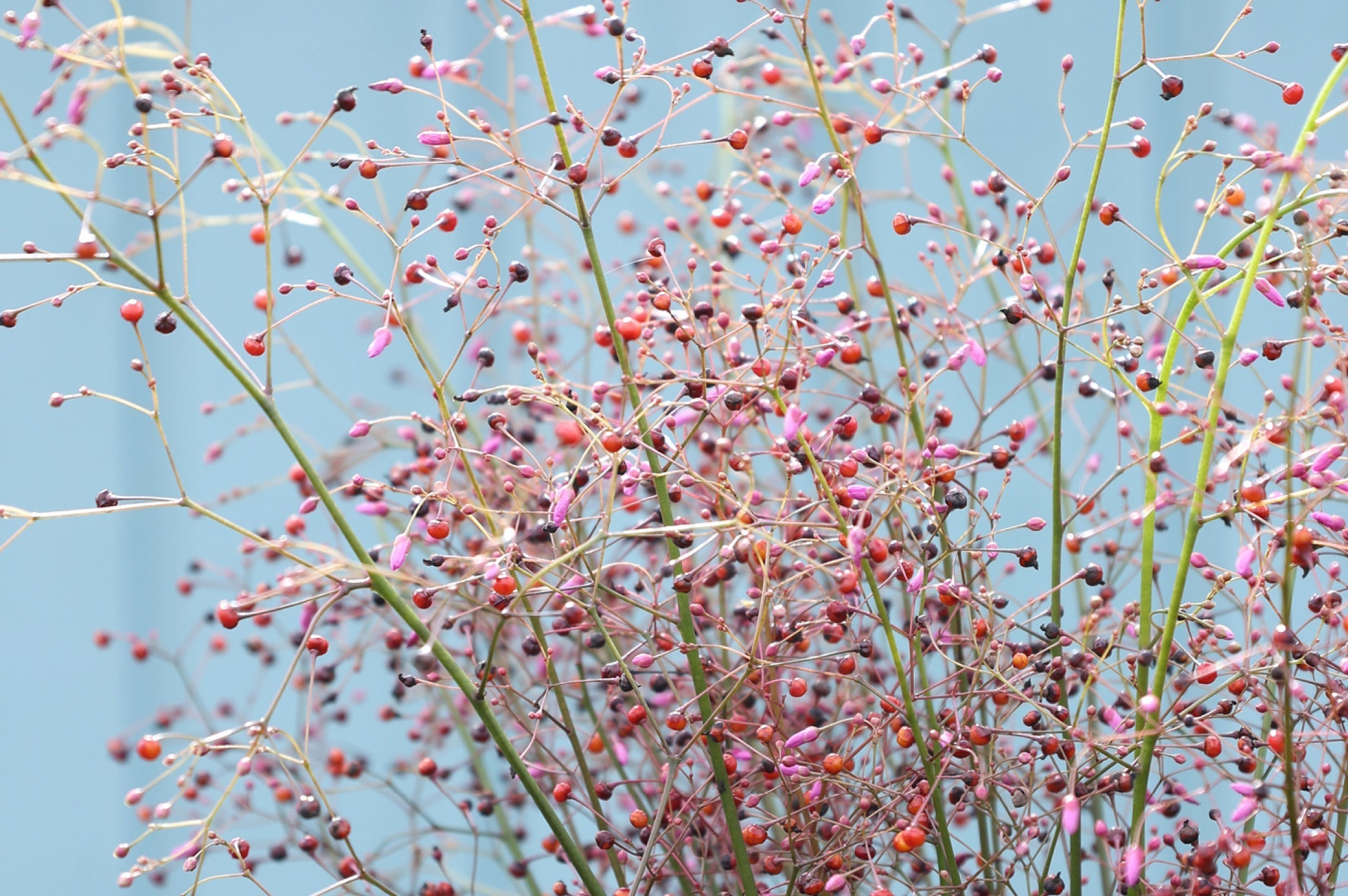
Erd-Ginseng – Exotische Rarität für Garten und Küche
Erd-Ginseng, botanisch bekannt als Talinum paniculatum, ist eine echte Rarität für Gartenliebhaber und Küchenexperimente. Die wärmeliebende Pflanze mit filigranen rosa Blüten und leuchtenden Samenkapseln ist nicht nur ein optisches Highlight – ihre Blätter sind essbar, die Wurzeln gelten als heil...
Continue reading
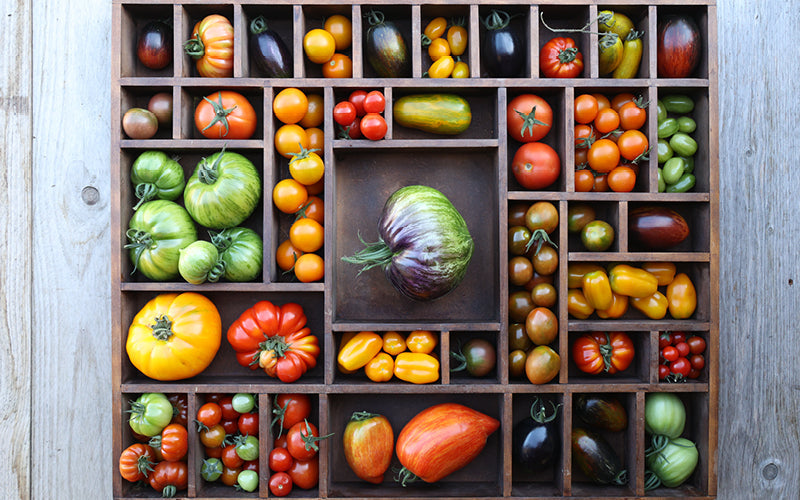
Tomatensorten im Überblick – Von Black Cherry bis Zuckertraube: Die besten Sorten fürs Beet & den Topf
Die Welt der Tomaten ist bunt, vielfältig und aromatisch – doch welche Sorte ist die richtige für deinen Garten oder Balkon? Ob süße Cocktailtomate, pflegeleichte Buschtomate oder imposante Ochsenherztomate: Jede Tomatensorte hat ihre Besonderheiten. In diesem Beitrag stellen wir dir beliebte Tom...
Continue reading
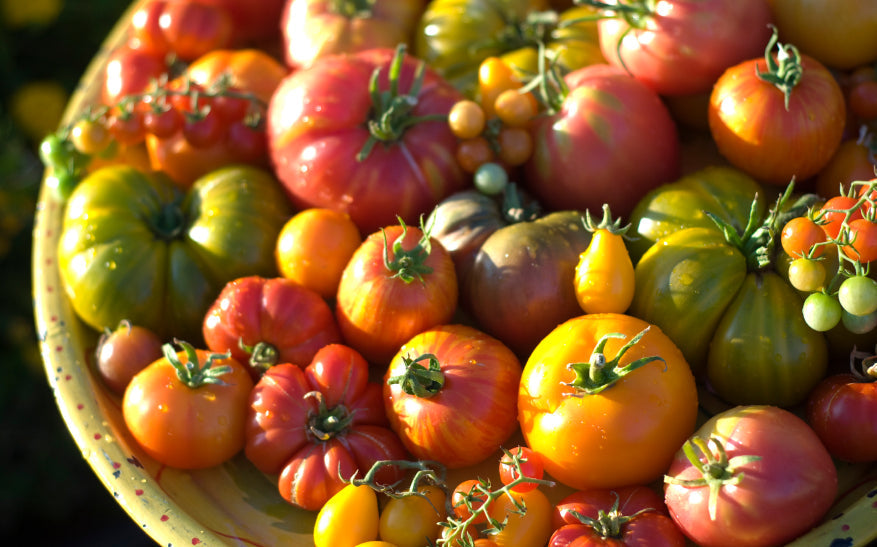
Tomaten ernten & vermehren – Die besten Tipps für deine süße Sommerernte
Die Tomatenernte gehört zu den schönsten Momenten im Gartenjahr. Doch wann ist der richtige Zeitpunkt zum Ernten? Wie lässt sich das Aroma voll ausreizen? Und was tun mit unreifen Früchten? In diesem Beitrag findest du praktische Tipps für die Ernte, Pflege und sogar zur Vermehrung deiner Tomaten...
Continue reading
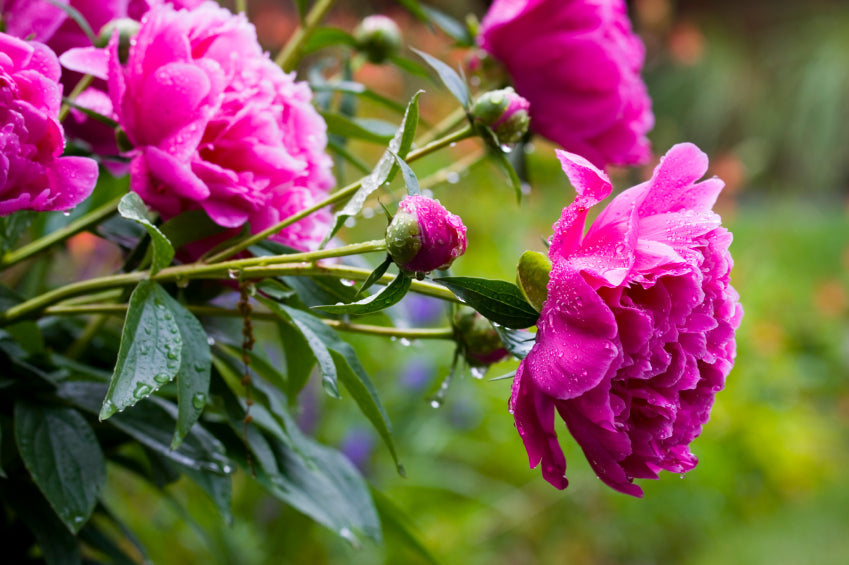
Pfingstrosen – prachtvolle Frühlingsblumen für Gartenromantik pur
Pfingstrosen (Paeonia) gehören zu den beliebtesten Blütenstauden im Garten. Ihre großen, duftenden Blüten, die oft an kunstvoll gefaltetes Seidenpapier erinnern, verzaubern von Mai bis Juni mit üppiger Farbenpracht. Ob als Solitärstaude, Gruppenpflanzung oder Schnittblume – Pfingstrosen sind viel...
Continue reading

Rambler roses – reaching high
Ramblers are the climbing masters among roses. With their meter-long shoots, they grow into sparse, mature trees up to heights of six to seven meters, provide greenery for large pergolas and imposing archways, and overgrow sheds.
Continue reading

Erdbeeren pflanzen, pflegen und vermehren – so gelingt die süße Ernte im Garten oder auf dem Balkon
Erdbeeren gehören zu den beliebtesten Früchten im Gartenjahr. Ihr süßes Aroma, ihre leuchtend rote Farbe und die unkomplizierte Kultivierung machen sie zur idealen Wahl für Hobbygärtner. Ob im Beet, im Hochbeet oder in Balkonkästen – mit etwas Vorbereitung und Pflege lassen sich Erdbeeren über vi...
Continue reading
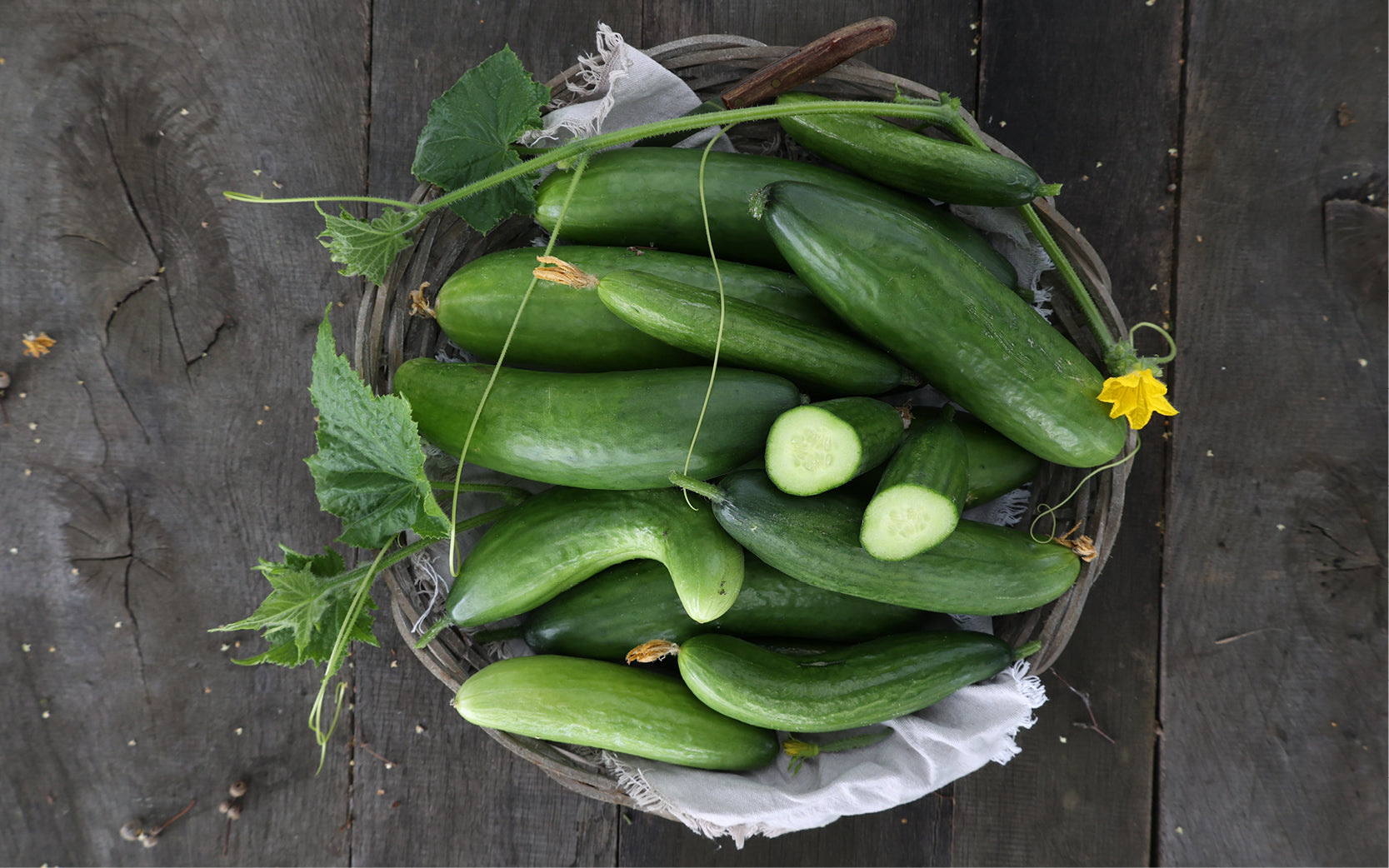
cucumbers
The large, green fruit belongs to the gourd family and, depending on the variety, is a climbing or creeping plant. Cucumbers (Cucumis sativus) require a lot of warmth and can therefore only be cultivated in summer here. However, with sufficient fertilization and a few tips, you too can soon exper...
Continue reading

Rose hips – fruits of roses
Growing wild or cultivated in the garden, as jam or tea. Discover which rose varieties produce particularly tasty rose hips and how to best use them in the kitchen.
Continue reading

